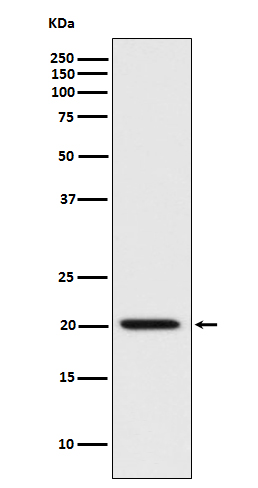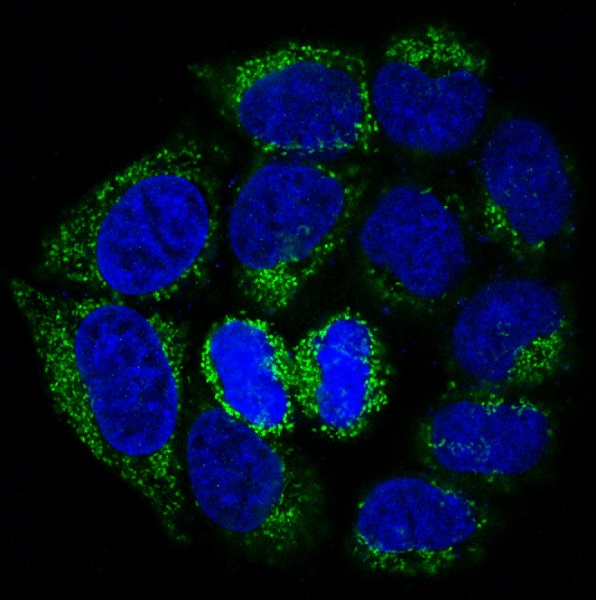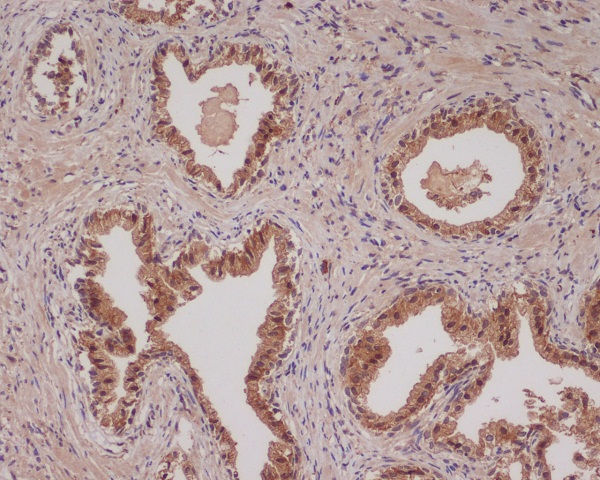


| WB | 1/500-1/1000 | Human,Mouse,Rat |
| IF | 1/20 | Human,Mouse,Rat |
| IHC | 1/50-1/100 | Human,Mouse,Rat |
| ICC | 1/50-1/200 | Human,Mouse,Rat |
| FCM | 1/50-1/100 | Human,Mouse,Rat |
| Elisa | 咨询技术 | Human,Mouse,Rat |
| Aliases | BAD; BBC6; BCL2L8; Bcl2 antagonist of cell death; BAD; Bcl-2-binding component 6; Bcl-2-like protein 8; Bcl2-L-8; Bcl-XL/Bcl-2-associated death promoter |
| Entrez GeneID | 572 |
| WB Predicted band size | Calculated MW: 18 kDa; Observed MW: 23 kDa |
| Host/Isotype | Rabbit IgG |
| Antibody Type | Primary antibody |
| Storage | Store at 4°C short term. Aliquot and store at -20°C long term. Avoid freeze/thaw cycles. |
| Species Reactivity | Human,Mouse,Rat |
| Immunogen | A synthesized peptide derived from human Bad |
| Formulation | Purified antibody in PBS with 0.05% sodium azide. |
+ +
以下是关于BAD蛋白及其抗体的参考文献示例(注:以下为模拟示例,建议通过学术数据库获取真实文献):
1. **文献名称**: "BAD phosphorylation at serine 112 regulates its interaction with BCL-XL in apoptosis signaling"
**作者**: Smith J, et al.
**摘要**: 本研究探讨了BAD蛋白在丝氨酸112位点的磷酸化对其与BCL-XL相互作用的影响,通过特异性抗体检测磷酸化状态,揭示了其在细胞凋亡信号中的调控机制。
2. **文献名称**: "BAD antibody-based detection in breast cancer progression"
**作者**: Lee H, et al.
**摘要**: 利用抗BAD抗体分析乳腺癌组织中BAD蛋白表达水平,发现其低表达与肿瘤耐药性相关,提示BAD可能作为预后标志物。
3. **文献名称**: "Role of BAD in neuronal apoptosis: Insights from antibody-mediated inhibition studies"
**作者**: Chen R, et al.
**摘要**: 通过抗体阻断实验证明,BAD在神经退行性疾病模型中促进线粒体依赖性凋亡,为靶向BAD的治疗策略提供依据。
4. **文献名称**: "Development of a high-affinity monoclonal antibody for BAD protein characterization"
**作者**: Gonzalez M, et al.
**摘要**: 报道了一种高特异性抗BAD单克隆抗体的开发,验证了其在流式细胞术和免疫沉淀中的应用,助力凋亡通路研究。
**建议**:通过PubMed、Web of Science等平台,以关键词“BAD antibody”、“BCL-2 family apoptosis”或“BAD phosphorylation”检索最新文献,优先选择高引用的实验性研究。
**Background of Bad Antibody**
The Bcl-2-associated death promoter (Bad) protein is a pro-apoptotic member of the Bcl-2 family, which regulates programmed cell death. Discovered in the mid-1990s, Bad interacts with anti-apoptotic proteins like Bcl-2 and Bcl-xL, neutralizing their ability to block apoptosis. Its activity is tightly controlled by phosphorylation via survival signaling pathways, such as the PI3K/Akt and MAPK pathways. When dephosphorylated, Bad translocates to mitochondria, promoting cytochrome c release and caspase activation, ultimately triggering apoptosis.
Antibodies targeting Bad are essential tools for studying apoptosis mechanisms. They enable detection of Bad expression, phosphorylation status, and subcellular localization in techniques like Western blotting, immunohistochemistry, and flow cytometry. Research using Bad antibodies has elucidated its role in diseases, including cancer (where Bad inactivation contributes to tumor survival) and neurodegenerative disorders (linked to excessive apoptosis).
Bad antibodies also aid in exploring therapeutic strategies, such as modulating Bad phosphorylation to restore apoptosis in resistant cancers. However, specificity challenges arise due to homology among Bcl-2 family members, necessitating rigorous validation. Overall, Bad antibodies remain pivotal in apoptosis research, bridging molecular insights to potential clinical applications.
×